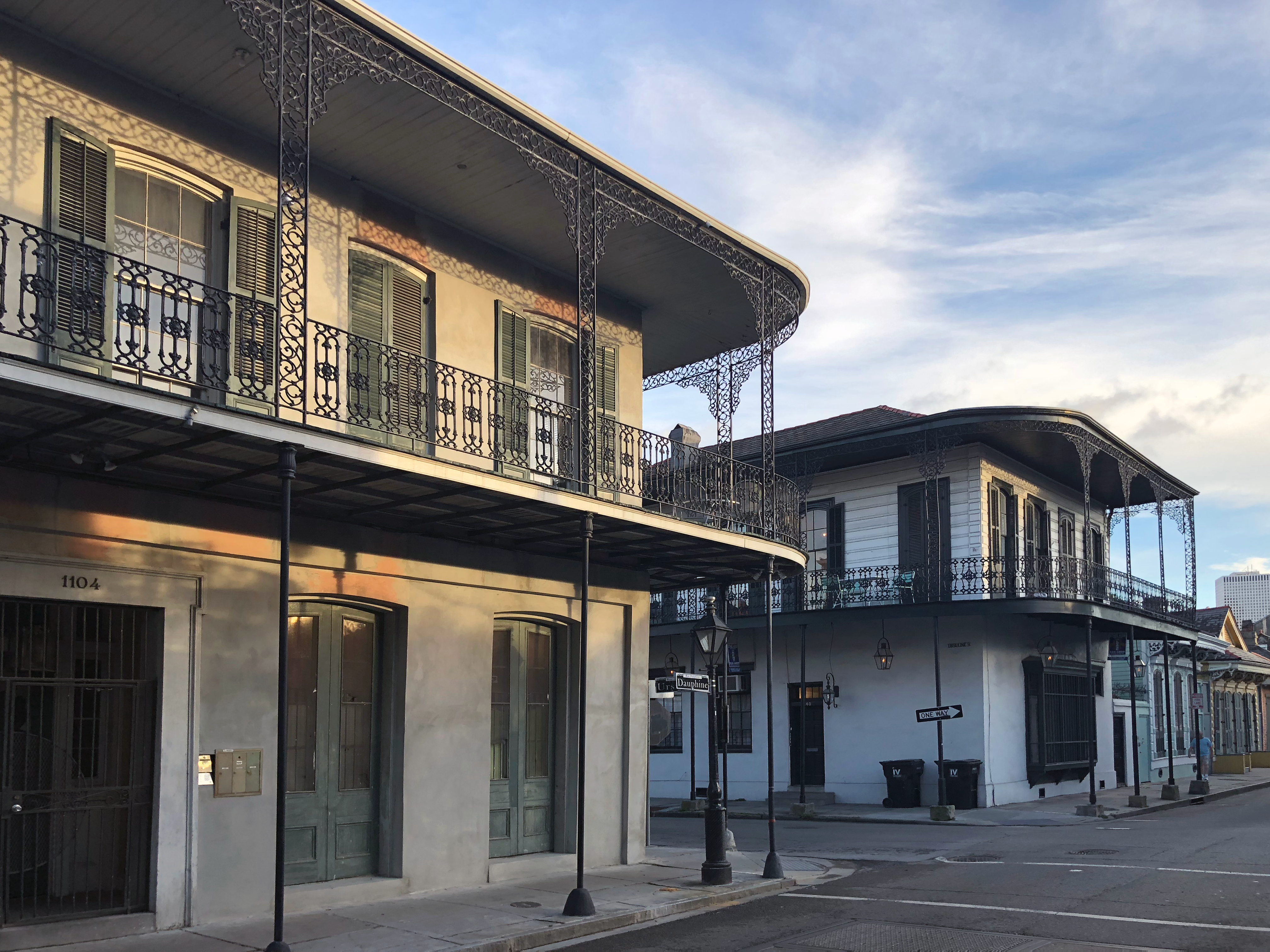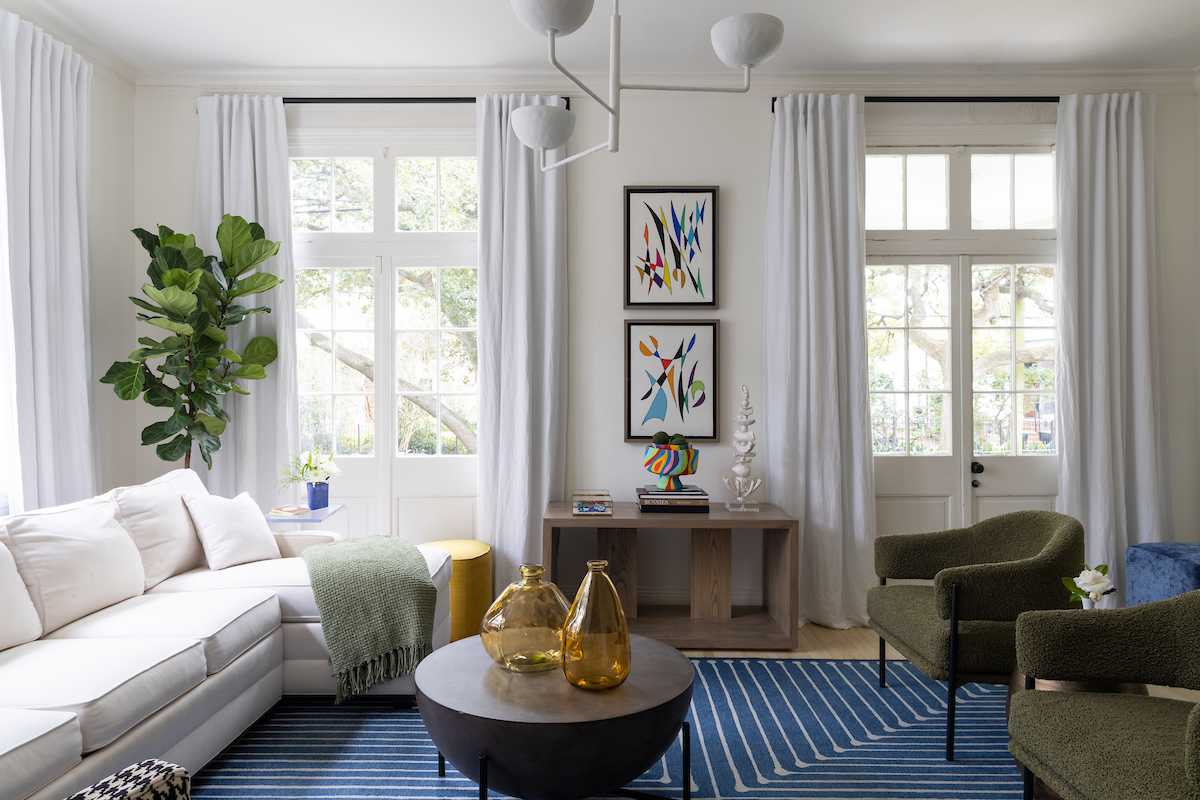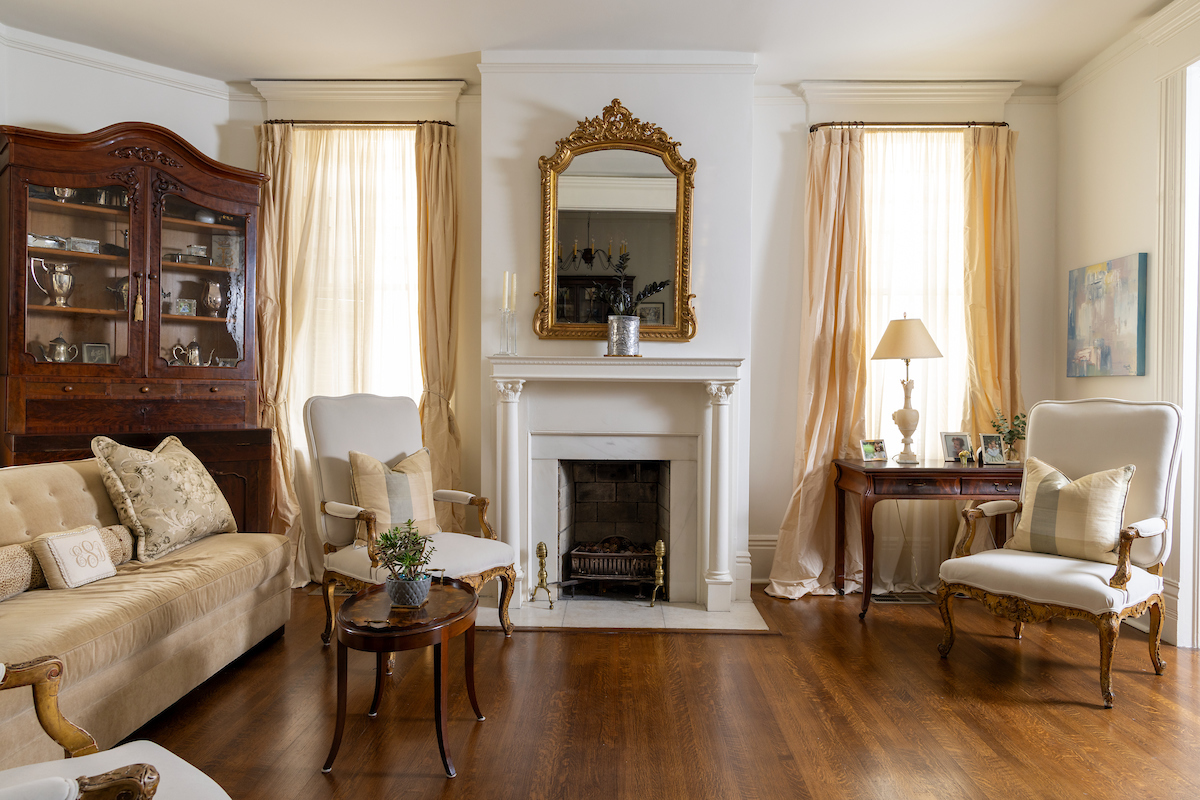This story first appeared in the September issue of the PRC’s Preservation in Print magazine. Interested in getting more preservation stories like this delivered to your door each month? Become a member of the PRC for a subscription!
New Orleans Truths vs. Tales
Legend
New Orleans is known for its Spanish wrought iron.
Fact
While there is some Spanish-era wrought iron found in the Vieux Carre — such as at Waldhorn’s (339 Royal St.), the Cabildo, the Bosque House and 617-19 Chartres St. — most of the decorative iron work in the city is cast iron.
Wrought iron has a lower carbon content, whereas cast iron has a greater carbon content making it more prone to rusting. Wrought iron often was waxed rather than painted, so it obtained a gray gunmetal appearance. Cast iron typically was painted a light green, known as Paris Green or a bronze color.
Wrought iron is hand hammered and very labor intensive, whereas cast iron is cast in a mold and can be easily reproduced. Wrought iron is malleable, whereas cast iron is brittle.
Wrought iron has a consistent cross-section because of its production process, whereas cast iron can be beveled, chamfered or curved in cross section. Wrought iron patterns tend to be simpler, whereas cast iron generally employs complex naturalist motifs, such as grapes, acorns, roses and seashells.
Stanly Arthur in the book “OLD New Orleans” (1956) claimed that local wrought iron balconies were made in Spain. This claim can’t be substantiated. The earliest cast iron was imported from England, where the technology was perfected during the Industrial Revolution, and later pieces came from northern U.S. cities. A limited amount of architectural cast iron was made locally. Leeds Iron Foundry (1825) — now home to the Preservation Resource Center — was the first local cast iron foundry.
Wrought iron patterns during the 1820s and 1830s incorporated cast iron ornamental details.
“One of the most admirable innovations upon the old system of building tall, staring structures for business purposes,” wrote The Daily Picayune in 1852, is the plan “of erecting galleries and verandahs of ornamental iron work.” This was cast iron. In 1859, Wood, Miltenberger & Co. offered 200 varieties of balcony railings and 50 veranda patterns.
New Orleans Truths vs. Tales is presented by the Friends of the Cabildo. Robert J. Cangelosi, Jr., AIA, NCARB, is president of Koch and Wilson Architects and a prominent architectural historian. His architectural practice is focused on the preservation, restoration, renovation and adaptive reuse of historic structures. This work includes projects such as the award-winning restorations of the Cabildo and St. Patrick’s Church. Cangelosi was the co-editor of the last two volumes of the Friends of the Cabildo’s highly regarded “New Orleans Architecture” series books and has served as a past editor of Preservation in Print.
Advertisement








